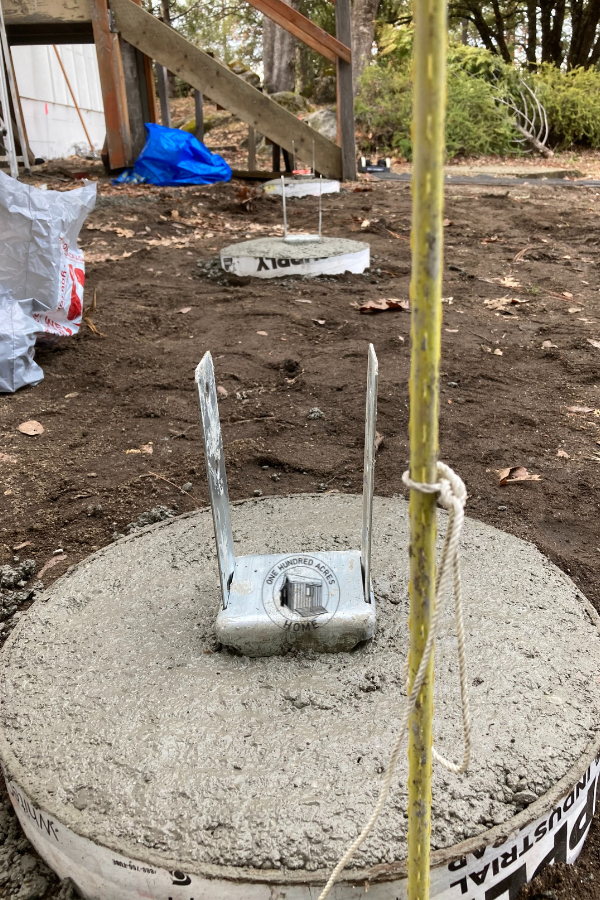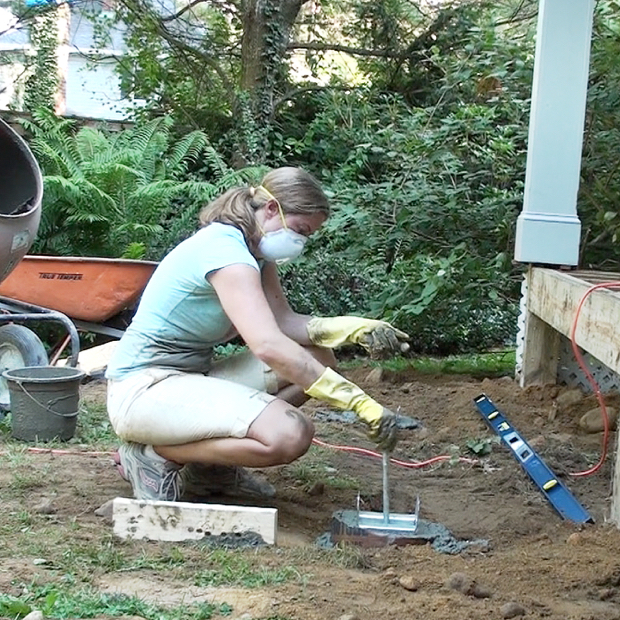Structural Honesty Matters: Choosing the Right Deck Footings for Your Outdoor Job
Choosing the Right Deck Footings for Stability and Durability
The longevity and safety and security of your deck depend greatly on the type of grounds you choose, as they supply the crucial assistance and security to endure the examination of time. In this conversation, we will certainly explore the different types of deck footings, take into consideration the vital aspects to weigh when making a decision, and delve into the pros and disadvantages of various options.
Kinds Of Deck Grounds
There are numerous kinds of deck grounds that can be used, each offering unique benefits and factors to consider. One usual kind of footing is the concrete pier footing. These footings include a round hole full of concrete, which provides a solid foundation for the deck blog posts. Concrete pier footings are reasonably very easy to mount and offer excellent security, making them a prominent choice for many deck projects.
These footings are set up by screwing them into the ground, which develops a secure foundation for the deck. They likewise allow for easy adjustment and progressing of the deck if required.
Alternatively, some building contractors choose for precast concrete grounds. These grounds are made from long lasting concrete and can be found in numerous shapes and sizes to fit different deck designs. Precast concrete grounds are practical to install and give a steady base for the deck framework.
Lastly, an additional choice is the post-in-anchor footing system. This kind of footing includes driving a steel support right into the ground and affixing it to the deck article. It offers adaptability in terms of positioning the deck blog posts and appropriates for decks with light-weight frameworks.
When choosing the appropriate sort of deck footing, it is vital to consider variables such as soil problems, deck load, and local structure codes (Deck Footings). Consulting with a professional specialist or architectural engineer can assist make sure the ideal footing is picked for a secure and safe deck
Factors to Take Into Consideration When Selecting Grounds
When selecting the appropriate footings for a deck, it is crucial to very carefully consider numerous aspects such as soil conditions, deck tons, and adherence to neighborhood structure codes. These elements play a significant duty in making certain the stability and longevity of the deck structure.
One of the primary elements to consider is the soil conditions. The kind of dirt on which the deck will certainly be constructed figures out the kind of footings called for. Decks developed on sandy or loosened dirts may require much deeper grounds to offer adequate support and prevent settling. On the various other hand, decks improved clay or extensive dirts may call for footings that can fit the soil's propensity to expand and contract.
Another important aspect is the deck tons. The weight of the deck, consisting of the products used and any potential real-time loads such as furniture or celebrations, have to be thought about when selecting footings. The footings have to be designed to bear the weight of the deck and distribute it uniformly to avoid any architectural problems or failures.
Last but not least, adherence to local building regulations is paramount. Building ordinance differ from region to region, and it is vital to adhere to the particular requirements established by the neighborhood authorities. Deck Footings. These codes make certain that the deck is developed securely and fulfills the required requirements for architectural integrity and load-bearing capability
Concrete Footings: Pros and Cons

Concrete grounds supply a number of advantages and downsides when used as the foundation for a deck. On the silver lining, concrete grounds provide outstanding stability and toughness. Concrete is a strong and rigid product that can support hefty lots and withstand different climate condition. It also has a lengthy life-span, making it a reputable option for long-lasting usage.
Another advantage of concrete grounds is their adaptability. They can be put right into various sizes and shapes to suit different deck styles and arrangements. Concrete grounds can be tailored to fit the details requirements and requirements of the deck framework.
Nonetheless, there are likewise some disadvantages to using concrete grounds. This can increase the general expense of the deck job and might call for professional help.

Helical Piers Vs. Sonotubes: Which Is Better?
In taking into consideration the foundation choices for a deck, the comparison between helical piers and sonotubes is critical in establishing the exceptional option. Helical piers, look at this website also known as screw heaps, are steel shafts with helical plates connected to them. They are twisted right into the ground making use of hydraulic equipment, providing a durable and secure structure for the deck. On the other hand, sonotubes are cylindrical types made of cardboard or fiber product that like it are loaded with concrete. They are put in a hole explored the ground and provide assistance for the deck.
The helical plates on the piers produce a strong grip with the dirt, moving or avoiding any kind of activity of the deck. Sonotubes, on the other hand, depend solely on the concrete filling for stability, which may not supply the very same level of strength and resistance.
In regards to installation, helical piers are reasonably less complicated and faster to set up contrasted to sonotubes. The hydraulic machinery utilized to turn the piers into the ground makes certain a quick and effective process. Sonotubes, on the other hand, call for digging openings and pouring concrete, which can be labor-intensive and taxing.
Additionally, helical piers are an even more flexible option. If required, they can be utilized in various dirt problems and can be readjusted or enhanced. Sonotubes, on the other hand, may require extra support, such as rebar, in certain dirt conditions or areas with high load demands.
Picking the Right Footings for Your Deck's Dimensions
For optimal architectural integrity, it is essential to thoroughly select the ideal grounds that line up with the measurements of your deck. The measurements of your deck, including its size, height, and size, play a significant function in determining the type and size of grounds required.
When selecting grounds for your deck, it is very important to consider the load-bearing capability of the dirt. The weight of the deck, incorporated with the weight of any furnishings or people on it, applies a significant force on the footings (Deck Footings). Therefore, it is vital to select footings that can effectively support this weight without sinking or changing with time.
Larger decks with better dimensions require larger footings to offer enough security and assistance. The shape of the footings, whether they are square or rounded, depends on the style and layout of the deck.
Final Thought
To conclude, picking the appropriate deck grounds is vital for making sure stability and durability. Factors such as the kind of footings, the deck's measurements, and the advantages and disadvantages of different alternatives need to be thought about. Concrete footings use strength and longevity, but may be more time-consuming and expensive to install. Helical piers and sonotubes have their very own advantages and drawbacks. Inevitably, selecting the proper grounds for your deck's particular needs is essential for a long-lasting and successful framework.
These footings are composed of a round hole loaded with concrete, which offers a solid structure for the deck articles. Concrete pier grounds are fairly easy to install and use excellent security, making them a popular choice for several deck jobs.
Precast concrete footings are hassle-free to install and offer a stable base for the deck structure.
It offers versatility in terms of positioning the deck messages and is appropriate for decks with light-weight frameworks.
Concrete footings offer numerous advantages and downsides when utilized as the structure for a go to website deck.